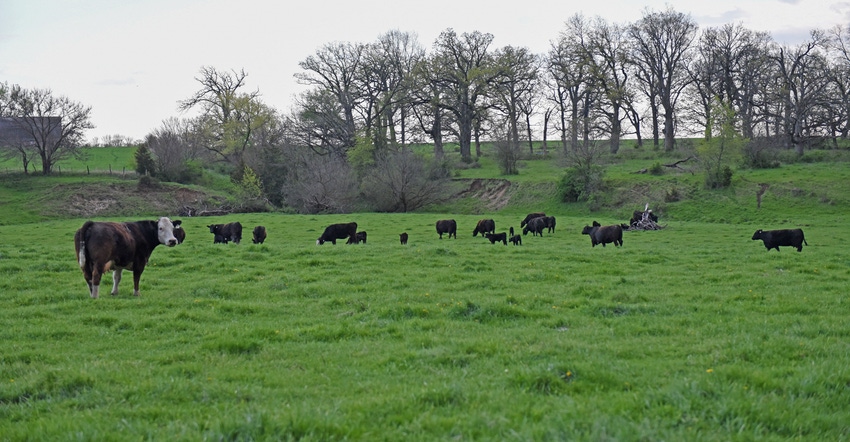
Last year, U.S. cattle numbers started to decrease, and this year the trend only continues.
Jason Franken, agricultural economist at Western Illinois University, says the U.S. cattle herd appears to be in its second successive year of decline, within what is typically a decade-long cattle inventory cycle consisting of periods of expansion and contractions.
“In July there was about 5.5% more beef cows than during the last low point in 2014,” Franken says. “The first signs that the beef herd was leveling off came about a year and a half ago.”
Why? Think economics and weather.
The recent cattle report indicates continuation of herd decline reflecting both economics and recent drought in parts of the country, he says. The drought could be an ongoing issue impacting the beef industry.
Franken shares other numbers to look at from USDA’s July Cattle Inventory report:
101 million total cattle and calves, down 1.3% from July 2020
31.4 million total beef cows, down 2% from last July
40.9 million cows and heifers calved, 1% below July 2020
4.3 million beef replacement heifers, down 2% from last July
other heifers weighing over 500 pounds, down 2.6%
steers weighing over 500 pounds, down 1.4%
bulls weighing over 500 pounds, even with July 2020
27.4 million total calves under 500 pounds, 1.4% lower than last July
Franken says the total number of calves under 500 pounds is still 2 million head more than the lowest point of 2014. This means a return to feeder prices of $2 per pound is currently unlikely.
“The 2021 calf crop, estimated at 35.1 million head, is down slightly from last year, which may help hold down the number of animals on feed and beef production for the remainder of 2021 and into 2022,” he adds.
From the USDA’s July Cattle on Feed report, Franken says it is important to note that 11.4 million head were on feed, which is 1% lower than July 2020. Also, in June, feedlots placed 7% less cattle and marketed 3% more head compared to last year.
Less cattle on feed reflects 2% fewer heifers and 0.8% fewer steers as compared to last year, Franken says. Heifers make up over 38% of current feedlot cattle compared to the 31% to 33% in feedlots during the last expansion of the cattle cycle. This also indicates the breeding herd is not currently expanding.
What to expect
So, what does all this data mean for producers? Franken predicts decent cattle prices.
For the last two quarters of this year, slaughter steer prices are forecast to average $117.73 and $121.93 per cwt, respectively, and $129.07 and $132.27 per cwt, respectively, for the first two quarters of 2022, he says. For feeder steers, prices are forecast to average $158.96 and $156.87 per cwt, respectively, for the last two quarters of 2021. In the first two quarters of next year, feeder steer prices are forecast to average $161.03 and $163.55 per cwt, respectively.
This could be good news for cattle producers.
“One nice thing from the producer standpoint is corn prices are coming down, implying lower cost of feed,” Franken says. “This can result in better feeder prices, instead of producers discounting what they are willing to pay for live animals that they will feed more.”
And in terms of the breeding herd? “With more heifers going to the feedlots, this means people aren’t retaining replacement heifers,” Franken says. “If you are looking to liquidate some older cows and then replace them with young ones, then replacement heifers are probably available. But most producers are not going to expand their herd right now.”
To take a closer look at the recent data, visit the University of Illinois farmdoc website and watch the video below.
About the Author(s)
You May Also Like






